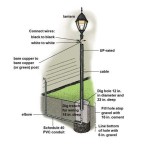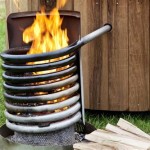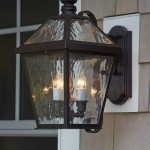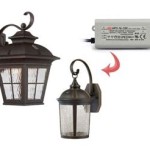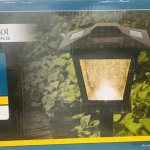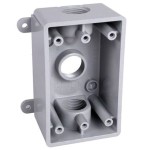How to Hang Plants Outdoors
Hanging plants outdoors can add a touch of vertical greenery and visual interest to any outdoor space. Whether you have a balcony, patio, or garden, there are many ways to display your plants in a stylish and functional way. This guide will provide you with comprehensive instructions on how to hang plants outdoors, covering everything from choosing the right hanging method to selecting the ideal plants for your space.
1. Choosing the Right Hanging Method
The first step in hanging plants outdoors is selecting the appropriate method. There are several options available, each with its own advantages and drawbacks. Here are some of the most popular methods:
- Hanging Baskets: These traditional hanging planters are lightweight and come in a wide range of materials and designs. They are ideal for plants that trail or cascade, such as petunias, geraniums, and ivy.
- Macrame Hangers: Macrame plant hangers offer a bohemian and stylish way to display your plants. They are usually made from natural materials like cotton rope or jute, and they can be hung from hooks or beams.
- Planter Hooks: These hooks are designed specifically for hanging planters. They can be attached to fences, walls, or other structures. They are available in various materials, such as metal, plastic, and wood.
- Ceiling Hooks: For a more dramatic effect, you can hang plants from the ceiling using heavy-duty hooks. This method works well for plants that are larger or heavier, such as ferns or orchids.
- Trellises: Trellises can be used to support climbing plants or vines, allowing them to grow upward and create a vertical green wall. Trellises can be made from various materials, including wood, metal, and plastic.
When choosing a hanging method, consider the weight of your plants, the size and shape of your outdoor space, and the overall aesthetic you want to achieve. You can mix and match different methods to create a unique and interesting display.
2. Selecting the Right Plants
Once you have chosen your hanging method, it's time to select the right plants. Not all plants are suitable for hanging, and some thrive better in certain conditions than others. Here are some factors to consider when choosing plants for hanging outdoors:
- Light Requirements: Some plants require full sun, while others prefer shade. Consider the amount of sunlight your outdoor space receives and choose plants that will thrive in those conditions. For example, succulents are well-suited for sunny locations, while ferns prefer shady spots.
- Water Needs: Plants that are hung outdoors will need regular watering, especially during hot weather. Choose plants that are relatively drought-tolerant or that you can easily access for watering.
- Trailing Habit: Plants that trail or cascade are ideal for hanging baskets or planters. They create a beautiful, cascading effect and often have a more graceful appearance than upright plants.
- Size and Weight: Consider the size and weight of the plants you choose, as they will weigh down the hanging structure. Choose plants that are appropriate for the size and weight capacity of your hanging method.
Here are some popular plants that are well-suited for hanging outdoors:
- Petunias: These trailing flowers come in a wide range of colors and sizes, making them a versatile choice for hanging baskets.
- Geraniums: These vibrant flowers are known for their long blooming season and drought tolerance. They are perfect for sunny locations.
- Fuchsias: These delicate flowers offer a unique and elegant touch to any outdoor space. They thrive in partial shade.
- Ivy: This evergreen climber is easy to grow and requires minimal maintenance. It is a great choice for adding greenery to walls or fences.
- Succulents: These drought-tolerant plants are perfect for hanging baskets in sunny locations. They come in a variety of shapes and sizes.
3. Hanging Your Plants
Once you have chosen your hanging method and selected your plants, it's time to hang them. Here are some tips to ensure that your plants are securely hung and receive the proper care:
- Use the Right Hardware: Choose hooks or other hanging hardware that are strong enough to support the weight of your plants and planters. If you are using a trellis, ensure that it is firmly attached to the ground or wall.
- Plant Properly: Before hanging your plants, ensure that they are planted in well-draining soil. If you are using hanging baskets, make sure they have drainage holes to prevent overwatering.
- Water Regularly: Plants that are hung outdoors will need regular watering, especially during hot weather. Monitor the soil moisture and water when it feels dry to the touch.
- Fertilize Regularly: Plants that are hung outdoors will need regular fertilization to promote healthy growth. Use a balanced fertilizer specifically designed for flowering plants or foliage plants, depending on the type of plants you have chosen.
- Pruning and Maintenance: Prune your plants regularly to encourage bushier growth and remove dead or diseased leaves. This will also help to prevent the plants from becoming too heavy and straining the hanging structure.
Hanging plants outdoors is a fun and rewarding way to add greenery and visual interest to your outdoor space. By following these tips, you can create a beautiful and thriving display that will enhance your outdoor living experience.

Hanging Baskets For Your Backyard Na And Kraft Florists

The Best Outdoor Hanging Plants Love Renovations

16 Creative Ways To Hang A Plant Outdoors Family Handyman

And Easy Hanging Plant Basket Plants Diy Outdoor For Baskets

Hanging Baskets The Outside Garden Basket Guide Install It Direct

Ways To Make A Statement With Hanging Plants Indoors

Hanging Arrowhead Plant Google Search Patio Plants Outdoor

Best Outdoor Hanging Plants For Spring

8 Best Outdoor Hanging Plants For Your Patio Family Handyman

Choosing The Best Flowers For Hanging Baskets Gilmour
Related Posts
